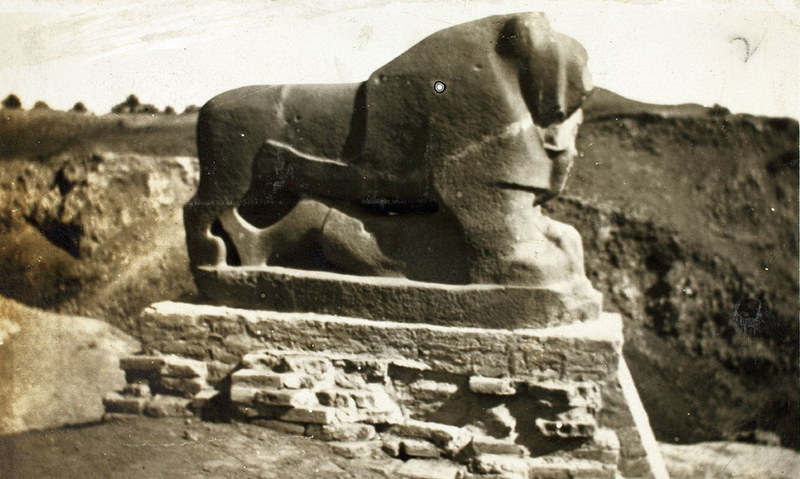Daniel lives in exile in Babylon
Dan 1:1-2 Daniel and other noble young men from the Jewish ruling classes are exiled to Babylon with King Jehoiachin in 598BC.
Dan 1:3-21 Daniel (whose Babylonian name is Belteshazzar) is chosen for training in the royal court at Babylon. He remains there until King Cyrus of Persia conquers Babylon in 539BC (see Daniel 10:1).

A Babylonian map of Mesopotamia in the British Museum
Babylon
Babylon was situated on the east bank of the River Euphrates in the low-lying marshlands of Mesopotamia (literally ‘between the rivers’ – between the Tigris and the Euphrates), some 56 miles / 90 km south of modern-day Baghdad in Iraq. Babylon became the capital of the ancient Babylonian Empire when Hammurabi expanded his kingdom to include the whole of Lower Mesopotamia in c.1700BC.
The Tower of Babylon (called the ‘Etemenanki’ in Sumerian, meaning ‘temple of the foundation of heaven and earth’) was an ancient ziggurat or step-pyramid built in Babylon around this time, dedicated to the city’s god Marduk. It was renewed by King Nebuchadnezzar in the 6th century, and is often confused with the Biblical Tower of Babel or Tower of Babylonia built over a thousand years earlier at Eridu (near modern-day Basra) by Nimrod in c.2850BC (see the feature on The Tower of Babylonia and Genesis 11:2-8).
Babylon was at its most magnificent during the 6th century BC, when King Nebuchadnezzar II (604-562BC) expanded the Babylonian Empire to its greatest extent, and transformed Babylon into a stunning city to reflect his wealth and power. The magnificent ‘Hanging Gardens of Babylon’, one of the wonders of the Ancient World, were built in the grounds of Nebuchadnezzar’s palace around 600BC. The gardens were built on top of huge stone arches to form a series of grand terraces, with exotic plants watered from the Euphrates by an elaborate system of irrigation channels, tunnels and pulleys.

The Lion of Babylon (SDASM Archives)
It's the Babylon of Nebuchadnezzar’s time that features most memorably in the Bible after Jerusalem fell in 587BC and the people of Judah were taken into exile in Babylonia (see 2 Kings 25:1-10). The picture painted of the exiles who ‘sat weeping beside the rivers of Babylon’ is one of the most poignant images of the Old Testament (see Psalms 137:1), and the visions of Ezekiel and Daniel are also set in Babylon around this time (see Ezekiel 1:1-3 & Daniel 1:1-7).
The ruins of ancient Babylon form a settlement mound or tell, covered with the remains of broken mud-brick buildings, near the Iraqi city of Al-Hillah. Nearby stands a huge basalt sculpture of the Lion of Babylon (a symbol of the King of Babylon). A modern reconstruction of ancient Babylon, and parts of the original archaeological site, were badly damaged during the invasion of Iraq in 2003.

A pacing lion - detail from the Ishtar Gate, Babylon (Jastrow)
Many treasures from ancient Babylon can still be seen, however, in museums across the world, most notably in the Pergamon Museum in Berlin. The original Ishtar Gate – famous for its impressive lion murals – can be seen here, while remains displayed in the British Museum in London include cuneiform tablets detailing Nebuchadnezzar’s military campaigns and a Babylonian diagrammatic map of Mesopotamia. The lions that paced along the blue glazed-brick murals lining the processional way from the Ishtar Gate to the Esagila (Temple of Marduk) are preserved in the Iraq Museum in Baghdad.
